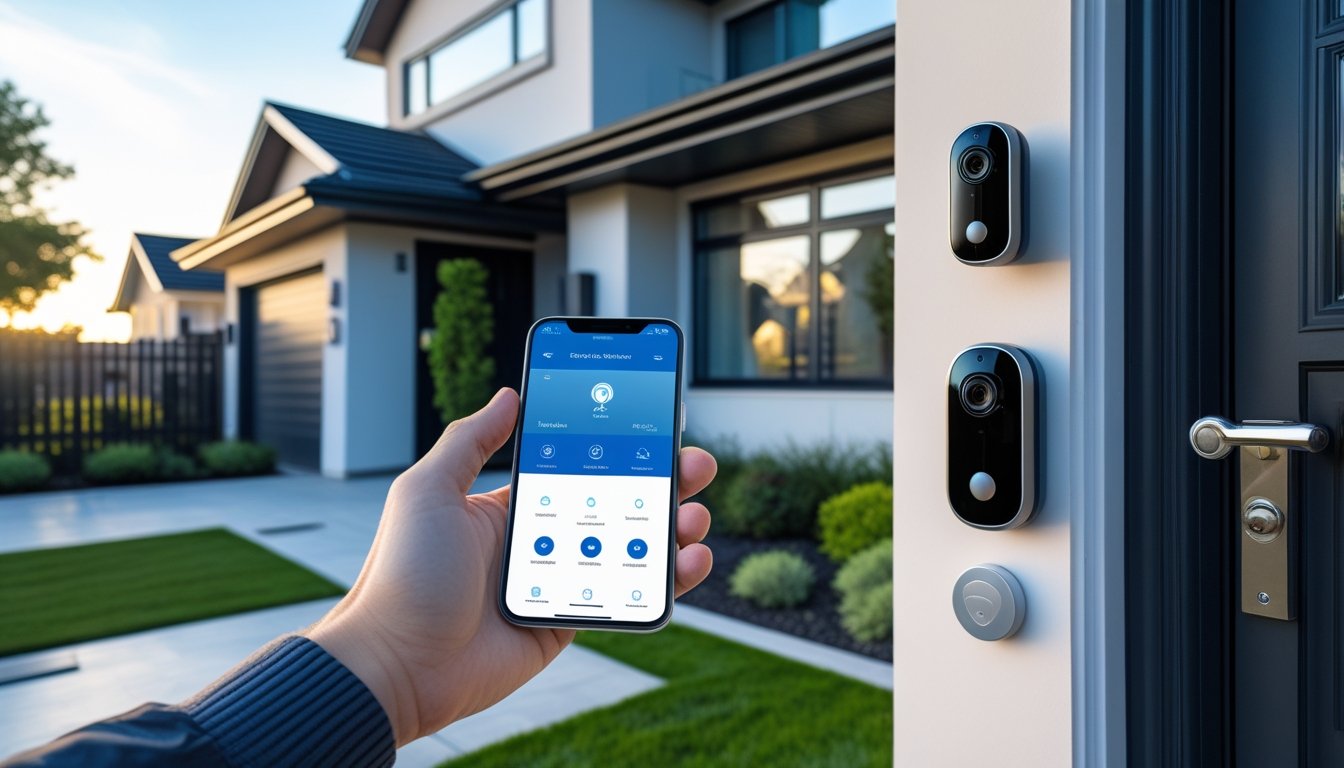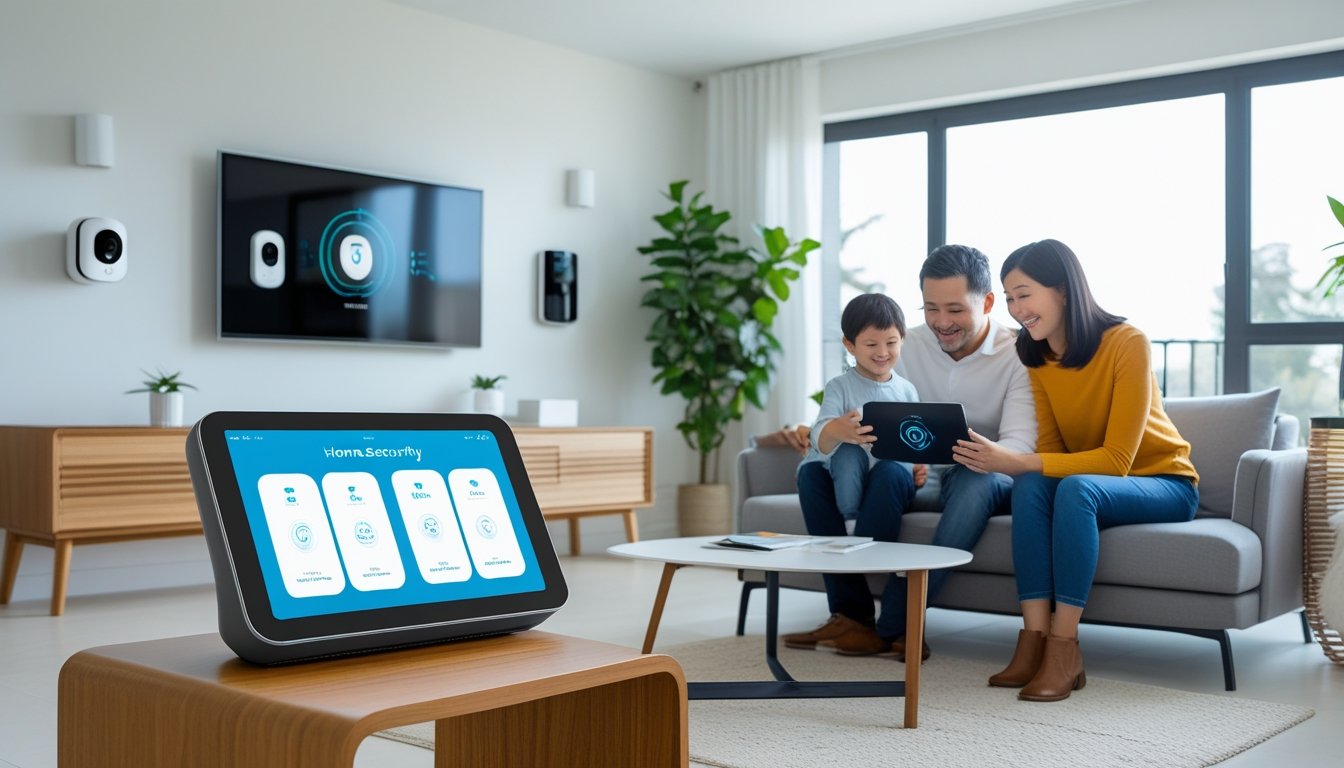Late updated: 29 Jun 2025 08:06
Written by: Elena Prescott
Guide To Modern Home Security Essentials: Protecting Your Sanctuary
In our rapidly evolving world, ensuring the safety of our homes has become more critical than ever. Advances in technology provide us with a wide range of options to bolster our home's security. At the heart of modern home security lies a combination of essential components like cameras, alarms, and smart home integration to create a layered, secure environment.

Our approach to home security involves adopting both traditional measures and cutting-edge solutions. The integration of smart technology has revolutionised the way we perceive and manage security, allowing us more control and insights into our home safety. As we explore these essentials, there are key aspects to consider for both residential and commercial properties.
Addressing common questions about costs, installation, and maintenance can further guide you in making informed decisions. By understanding the essentials and leveraging technology, we can enhance our protection strategies and achieve peace of mind in our day-to-day lives.
Key Takeaways
- Essential components like cameras and alarms are crucial for home security.
- Smart technology enhances control and insight for safety management.
- Addressing costs and maintenance helps in informed decision-making.
Fundamental Home Security Essentials
As we explore key elements of home security, we'll consider smart technologies and conventional methods that offer robust protection. These essentials form the foundation of a well-secured home environment.
Understanding Security Systems
Security systems form the backbone of home protection. They integrate various devices like alarms, cameras, and sensors. These systems can be monitored professionally, providing round-the-clock surveillance, or self-monitored via mobile apps. Many of us select systems that offer mobile alerts, remote control, and live video feeds.
Customisation is vital. We can tailor systems to include specific sensors, like motion detectors for rooms and entry sensors for doors and windows. A professionally installed system often includes a control panel that syncs all components. DIY options have become popular, offering convenience and flexibility.
Smart Locks and Keyless Entry
Smart locks and keyless entry systems revolutionise traditional locking mechanisms. With smart locks, we manage access through our smartphones, granting temporary or permanent entry to guests. Keyless entry eliminates the need for physical keys, reducing the risk of traditional lock picking.
These locks often come with advanced features including automatic locking, tamper alerts, and integration with home automation systems. We can receive notifications of who enters or exits, providing an extra layer of security. The combination of physical and digital security is essential to adapt to modern threats.
Alarm Systems and Sensors
Effective alarm systems incorporate various sensors detecting motion, sound, and forced entry. Motion sensors cover large indoor areas while window and door sensors monitor specific access points. Glass-break sensors alert us to shattered windows.
Advanced systems connect these alarms to our mobile devices, notifying us instantly of breaches. Some alarm systems integrate with video surveillance and smart home devices, creating a cohesive security network. Alarms serve as both deterrents and alerts, notifying neighbours of possible threats while warning intruders of impending detection.
Cameras and Surveillance
Cameras act as silent sentinels, constantly watching over our property. Quality security cameras provide clear images, often in high-definition, during day and night. Cameras with motion detection and two-way audio allow us to interact with visitors without opening the door.
Integrating cameras with smart home systems enhances their utility, offering live video feeds via mobile apps. Surveillance cameras, including indoor and outdoor options, are pivotal in evidence collection during incidents. They serve as both preventive measures and tools for investigation.
These components collectively form a robust defence strategy.
Smart Home Integration and Ongoing Safety

In today’s interconnected world, integrating smart technology into our homes offers more than just convenience. Smart home systems provide advanced capabilities for security and safety, including remote monitoring, automation, and proactive protection against various risks. Let’s explore how these elements work together to keep our homes secure.
Remote Monitoring and Access
Remote monitoring and access play a pivotal role in modern home security. With smartphone apps and cloud storage, we can easily access live camera feeds, receive alerts about suspicious activity, and even manage security systems from afar.
Many systems provide self-monitoring options, allowing us to oversee potential concerns directly. Alternatively, professional monitoring services such as Ring, SimpliSafe, or Abode offer constant surveillance and emergency response.
Strong passwords and two-factor authentication ensure access remains secure. Panic buttons also enhance safety by enabling us to summon help promptly. As a result, remote access extends beyond convenience, providing an essential layer of security.
Smart Home Technology and Automation
Smart home technology and home automation not only enhance convenience but significantly bolster security. Google Nest and other intelligent systems allow integration with lighting, smart alarms, and motion-activated lights.
Automation enables timed lighting cycles, creating the illusion of an occupied home and deterring potential burglars. Customisable routines integrate with virtual assistants like Google Assistant, offering seamless control over home environments.
Adopting a proactive approach, such systems alert us to threats immediately. By harnessing the synergy between various devices, we craft a safe, intuitive living space.
Environmental and Emergency Protection
Incorporating environmental sensors alongside traditional security measures helps safeguard against threats like fire and gas leaks. Smoke detectors and carbon monoxide detectors are essential safety components.
These devices promptly notify us and relevant services during emergencies, enabling timely emergency response. Certain systems allow for DIY monitoring or connection to professional services for enhanced oversight.
We also focus on both monitored and unmonitored systems to cater to diverse needs. Whether opting for self-monitoring solutions or relying on an external body, we ensure our homes are equipped against various dangers.
Physical Barriers and Deterrents
Beyond technology, physical barriers such as fencing, gates, and window bars remain crucial in home security. These measures limit access to entry points and deter potential theft or burglary.
Strategic landscaping can also obscure views into the home, providing an additional layer of privacy and security. Neighbourhood watch schemes enhance community vigilance, while strong design elements forestall break-ins.
Erecting robust physical defences complements digital solutions. By combining both, we fortify our homes comprehensively against various external threats.
Frequently Asked Questions

Our focus is on clarifying pivotal aspects of modern home security. From examining system components to exploring the influence of these systems on insurance premiums, we're set to address common queries.
What are the core components of a comprehensive home security system?
A robust home security system typically includes alarms, surveillance cameras, motion detectors, and smart locks. These components work in unison to ensure safety and deter intruders, offering homeowners peace of mind.
How do DIY home security solutions compare to professionally installed systems in terms of reliability?
DIY systems offer flexibility and lower costs but might lack advanced features. Professionally installed systems, while more expensive, usually provide greater reliability with expert setup and monitoring options.
What advantages do smart home security systems offer over traditional security setups?
Smart home systems boast features like remote access and real-time alerts. Integration with other smart devices enhances convenience and control, allowing homeowners to manage security from anywhere.
In terms of features and cost-efficiency, which home security system stands out for homeowners?
Systems with scalable options and customisable packages tend to stand out. These allow homeowners to tailor features based on needs and budget, maximising cost-efficiency without compromising security.
How does the presence of a home security system influence home insurance premiums?
Many insurance providers offer discounts on premiums for policyholders with installed security systems. The presence of such systems reduces the risk of burglary claims, translating to potential savings.
Why is it critical to integrate fire and carbon monoxide detection with standard home security measures?
Integrating detectors for fire and carbon monoxide enhances safety by safeguarding against more than just intrusions. These additional measures are crucial for comprehensive protection and timely alerts to potential life-threatening hazards.
